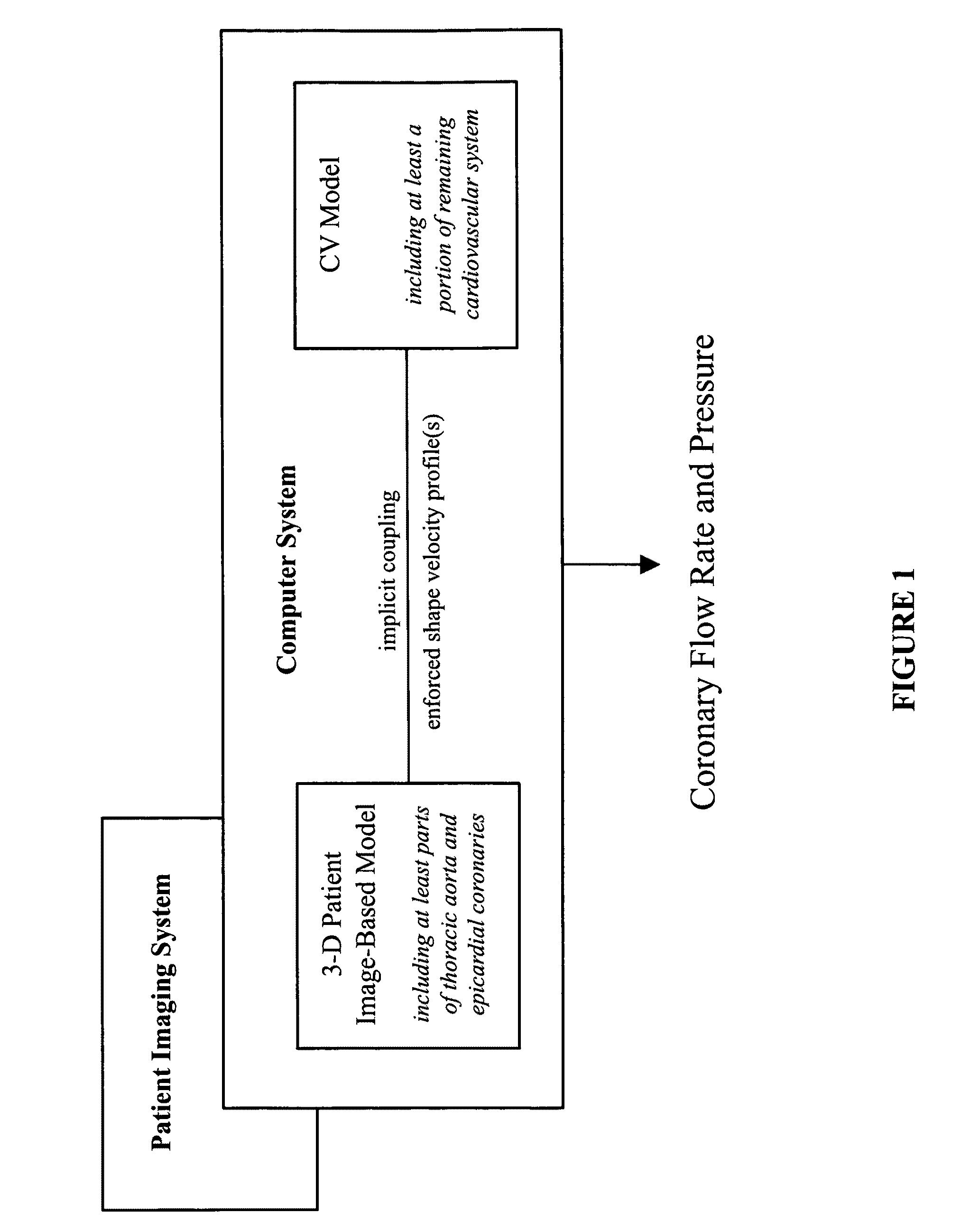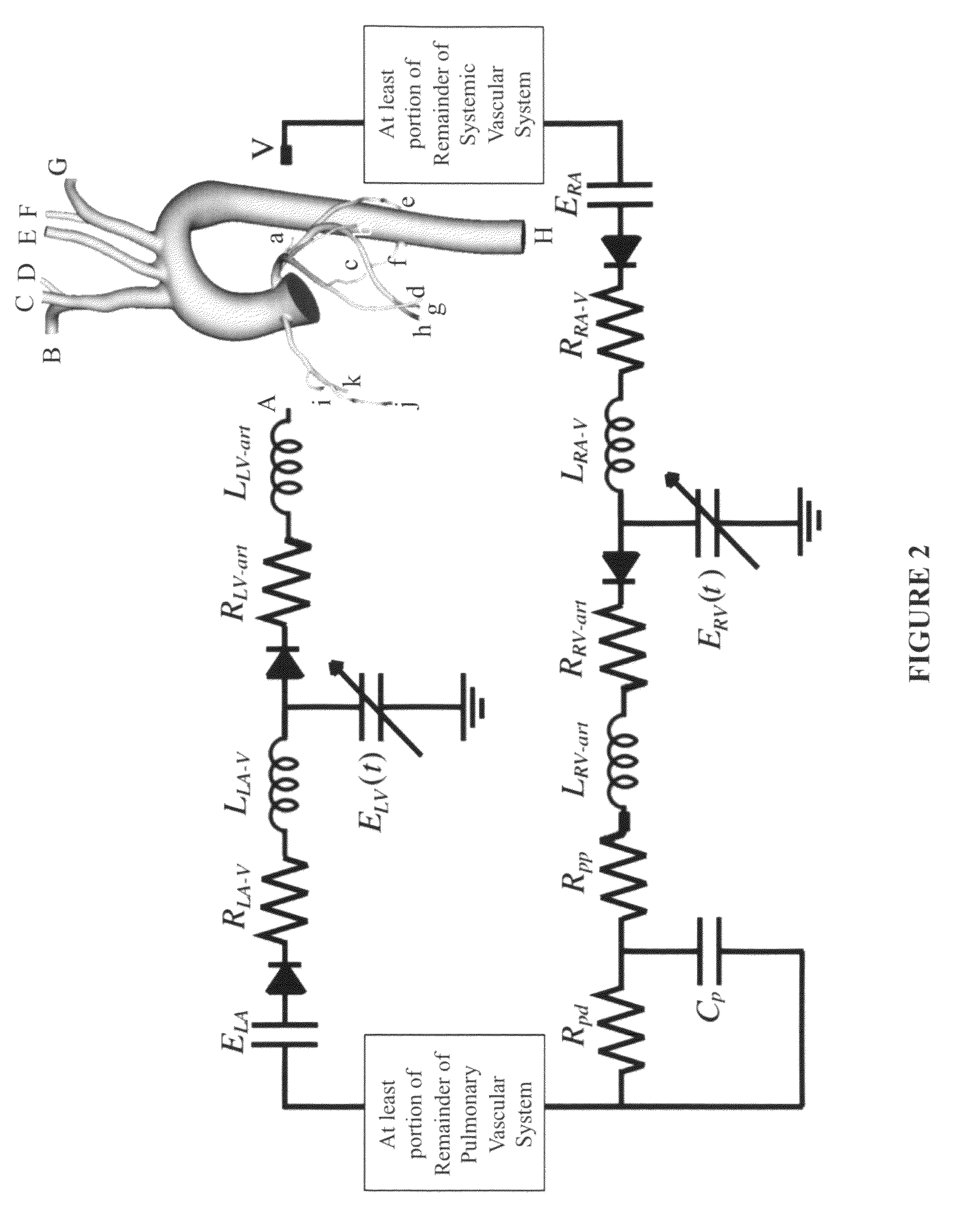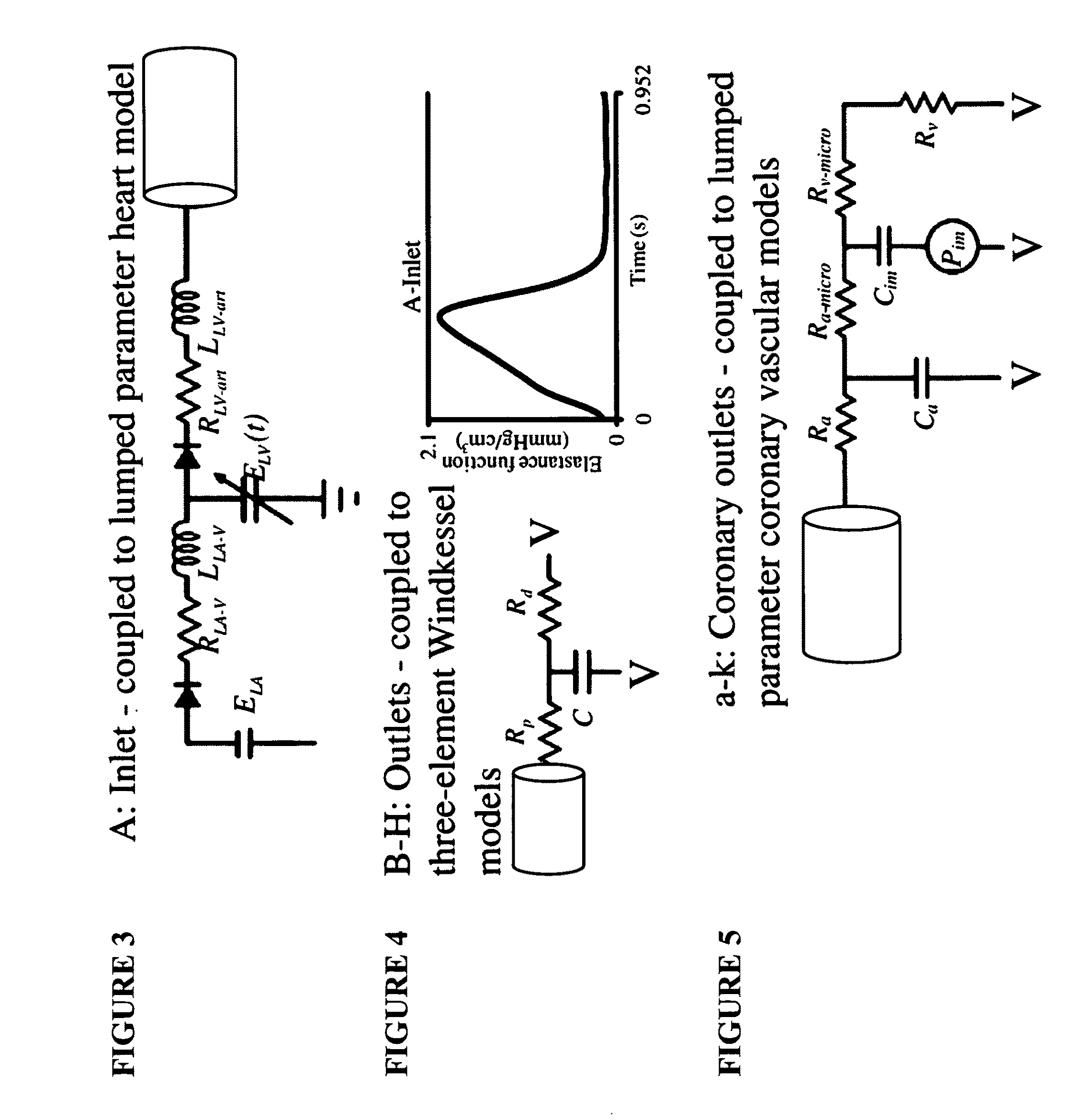Method for determining cardiovascular information
a cardiovascular information and information technology, applied in the field of determining cardiovascular information, can solve the problems of limited information obtainable from medical imaging techniques and invasive flow and pressure measurement techniques, high invasiveness and restricted, computational simulations have been rarely used to predict pulsatile velocity and pressure field of three-dimensional pressure, etc., to achieve the effect of simulating one or more hemodynamic benefits and minimizing model instabilities
- Summary
- Abstract
- Description
- Claims
- Application Information
AI Technical Summary
Benefits of technology
Problems solved by technology
Method used
Image
Examples
Embodiment Construction
[0014]Methods to calculate flow and pressure in three-dimensional coronary vascular beds are provided by considering a hybrid numerical / analytic closed loop system. For each coronary outlet of the three-dimensional finite element model, a lumped parameter coronary vascular bed model was coupled and the impedance of downstream coronary vascular networks not modeled explicitly in the computational domain was approximated. Similarly, Windkessel models were assigned to the upper branch vessels and the descending thoracic aorta to represent the rest of the arterial system. For the inlet, a lumped parameter heart model was coupled that completes a closed-loop description of the system. Using the heart model, it is possible to compute the compressive forces acting on the coronary vascular beds throughout the cardiac cycle. Further, the shape of velocity profiles of the inlet and outlet boundaries with retrograde flow was enforced to minimize numerical instabilities. The computer models sol...
PUM
 Login to View More
Login to View More Abstract
Description
Claims
Application Information
 Login to View More
Login to View More - R&D
- Intellectual Property
- Life Sciences
- Materials
- Tech Scout
- Unparalleled Data Quality
- Higher Quality Content
- 60% Fewer Hallucinations
Browse by: Latest US Patents, China's latest patents, Technical Efficacy Thesaurus, Application Domain, Technology Topic, Popular Technical Reports.
© 2025 PatSnap. All rights reserved.Legal|Privacy policy|Modern Slavery Act Transparency Statement|Sitemap|About US| Contact US: help@patsnap.com



